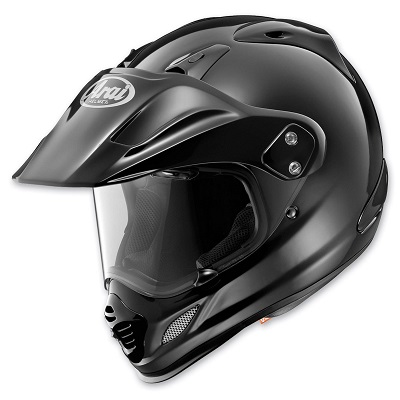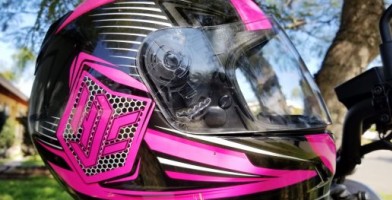Types of Helmets Reviewed in 2024
Not just “skid lids” anymore, motorcycle helmets have become essential components for both serious and recreational riders everywhere. Since they are mandated throughout the United States (only Illinois, Iowa, and New Hampshire do not require motorcyclists to wear helmets), the helmet market has exploded in the last twenty years with numerous companies focusing on producing types of helmets and other accessories for riders. The bulk of these types of helmets are produced in foreign lands such as China, South Korea, and Japan, which may be a turn off for some consumers who wish to buy American. In today’s global economy, however, Chinese products are often just as well made as American goods at lower prices. For the true patriot, Bell has been manufacturing many types of helmets in America since the 1950s.
Featured Recommendations

- LS2 569 Track Solid Open Face
-
Our rating - Price: See Here

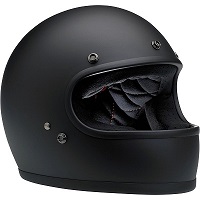
- Biltwell Gringo Full Face
-
Our rating - Price: See Here

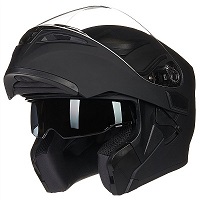
- ILM Dual Visor Modular Full Face
-
Our rating - Price: See Here

Depending on how and where the rider plies his hobby will determine which type of helmet to choose. For those who simply want to look cool cruising the urban environment, an open face helmet may suffice. Open face types of helmets usually provide the option of going with or without a shield or visor. A pair of sunglasses combined with a trendy lid can raise the cool factor exponentially. For those a little more serious about speed, full face types of helmets are essential. Full face types of helmets provide maximum protection for the off-road speed demon or the freeway bound touring rider or commuter.
For safety, consumers need to consider the various international certifications such as the standard DOT or ECE standards. More daring riders who covet safety will insist on Snell Foundation approval for any helmet they wear. Finally, fit, comfort, optional communication ability, and cost will be factors in choosing a helmet.
All Types of Motorcycle Helmets
1. LS2 569 Track Solid Open Face
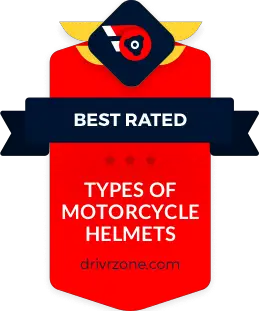
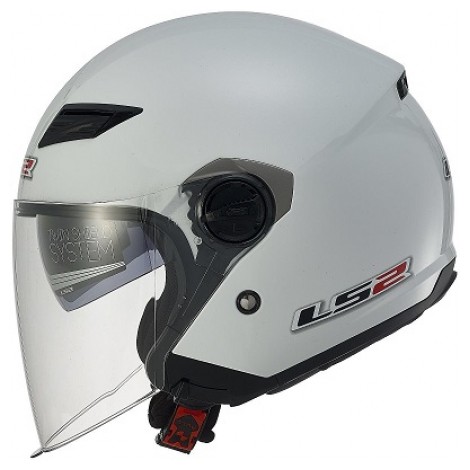
One of the best things about this helmet is its shield and drop-down sun visor. Not only does the shield provide outstanding front and peripheral visibility but the rider also has the ability to drop and lift the helmet’s retractable sun visor with the simple push of the “Ergo Touch Control” button located on the side of the helmet.
Ventilation
This helmet has excellent ventilation with both front and back venting systems. The front includes two adjustable vents that are easily manipulated with gloved hands. The exhaust vent in the rear of the helmet provides excellent air flow and is also conveniently adjustable.
Cost and Value
With a quite affordable price, the 569 has tremendous value and, at only about three pounds, is one of the lightest and safest helmets in its price range. It includes many of the same features (push button visor, soft interior padding, good ventilation) as the more expensive Shoei J Cruise and the Arai XC.
Price compared to other open face helmets
Easily manipulated features such as vents and sun visor
Optically correct shield
Sits nice and low on head
DOT and ECE certified
Customers report the helmet tends to run small
Wind noise when vents are open
2. Biltwell Gringo Full Face

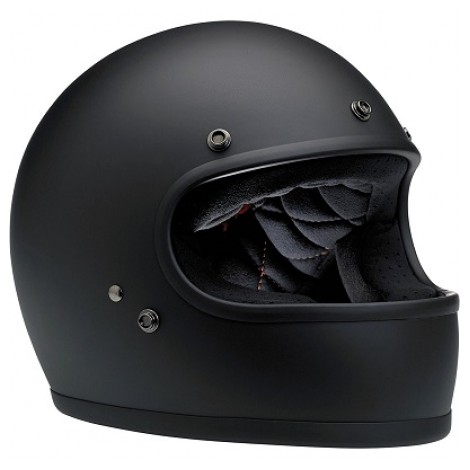
For the “chopped up” crowd, this helmet offers a retro look reminiscent of vintage 1960’s Italian helmets. People will think James Dean has arrived when you drive up outfitted with bubble shield, sunglasses or goggles.
Custom Lining
With custom lining and diamond stitched quilted foam for a soft feel it provides supreme comfort. The removable liner includes comfortable padding around the chin. Inside of helmet fits snugly for added safety.
Cost and Value
Prices can be as much as twice the price of the 569, depending on the vendor. Still, the price is just right for the motorcyclist who wants to combine “old school” looks with modern safety.
Meets DOT safety requirements
Retro look will bring stares
Customers report sizes are generally accurate
Lighter than most full-face helmets
Replaceable liner from Biltwell
Lack of vents may cause overheating, especially with full shield
Shields not included; sold separately
3. ILM Dual Visor Modular Full Face
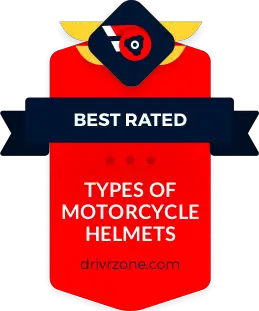
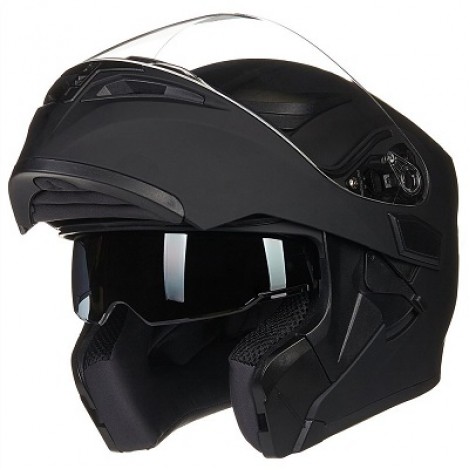
Cutting through the wind like a razor, the aerodynamic outside shell produces a minimum amount of vibration and wind noise. It’s also a helmet built for speed out on the open road or the track.
Safety
Not only is this helmet a speed demon, it’s also a secure place for the most important part of your body. The helmet receives the standard DOT certification but also exceeds FMVSS-218 (Federal Motor Vehicles Safety Standards) requirements.
Cost and Value
At under $100, it gives the new or thrifty rider an attractive alternative to more expensive full-face helmets. It’s also extremely handsome with dual vents on top, optically correct double visor and several different colors to choose from. Add supreme safety features and it’s highly recommended, comparing quite favorably with other full-face helmets in its price range such as the GLX Dual Visor, the Tengchang Modular or the Bell Qualifier.
Impact absorbent detachable liner with easily removeable chin pads
Scratch resistant anti-fog one button flip up double visor system
Multiple colors available
Quick release chin strap
Easily adaptable to Bluetooth sound system
Plastic, petroleum odor when new
Sizes not always accurate
4. Shark Drak Open Face

Café racers will rejoice when they lay their eyes on this retro, very European looking helmet with menacing attached Zeis goggles and mouthguard. A wide range of graphics from the military, racing and urban world can make this helmet even more striking. Darth Vader would be proud.
Quiet with Excellent Ventilation
Because it’s basically an open face helmet, this helmet provides plenty of ventilation through air vents in the mouthguard and a closeable vent on top. It is also surprisingly quiet for a three-quarter helmet.
Cost and Value
For under $300, this lid provides excellent value for the rider who needs a lightweight helmet that will definitely make a fashion statement. It is not, however, a helmet for riders who crave speed or those doing long distance traveling. Due to its safety limitations, it’s more for the urban café chop crowd who have a particular attitude to display.
Weight comes in under three pounds
Neutral shape (intermediate to round) for all head sizes
DOT and ECE certified
Premium bamboo hypoallergenic liner soft as a baby’s bottom
Bluetooth connection cutouts
Cumbersome mouthguard and goggles assembly
Best to stay under 40 mph with this helmet
5. Bell Qualifier Full Face
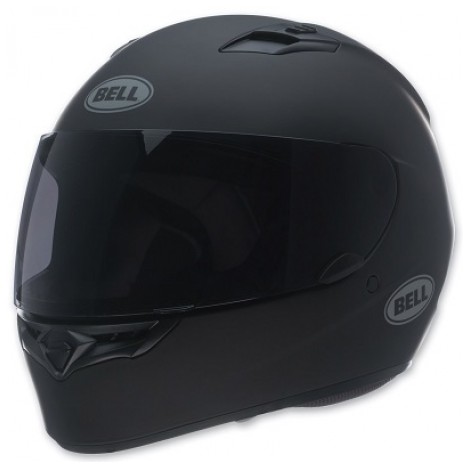
In its price range, the Qualifier replaces the older Bell Arrow with major updates, including a move to the more popular intermediate oval shape. Whereas the Arrow was basically round, the Qualifier narrows from front to back for a more satisfying fit.
Shield
The Qualifier comes standard with the UV resistant, anti-scratch, optically correct Nutra Fog II shield with a quick release option for upgrading to Bell’s outstanding Transitions Photochromic shield which intuitively changes from light to dark and vice versa depending on existing conditions.
Cost and Value
At about the same price as the LS2 569, the Qualifier offers excellent value when compared to more expensive full-face helmets such as Bell’s own Moto 9 or the pricey Arai Astro IQ. Upgrading to the Photochromic shield will further increase the value of the Qualifier and still makes it a cheaper purchase than top competitors.
Polycarbonate/ABS shell weighs in at a little more than 3.2 pounds
Low profile chimney vents on top and adjustable chin vents
Larger sizes don’t add extra weight
Easy cleaning pull-out moisture wicking, anti-bacterial liner
Speaker cut outs for communication system
Noisy and poor air flow
Standard shield not tinted
6. Scorpion Exo GT920 Modular
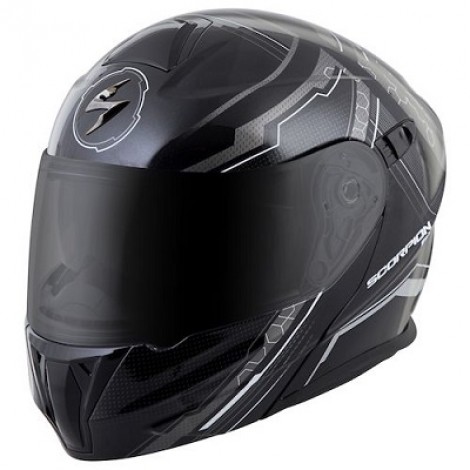
With an aggressive aerodynamic style this polycarbonate helmet weighs in at three pounds, ten ounces and is far lighter than previous Scorpion entries in the modular market and compares well to its competitors.
Shield and Visor
Sporting the Eliptech flip up system, the Everclear fog free visor now seals more positively to the base plate for reductions in wind and noise. The shield also features a single position chin vent easily manipulated with a gloved hand.
Cost and Value
Considering its light weight and features you might find on more expensive helmets, it is a bargain at just over $200. Scorpion has done an outstanding job revamping its entry into the affordable modular market. This lid is a definite upgrade from the Scorpion Exo-900 and compares favorably with the more expensive Shoei Neotec, Shark Evoline 3 or the Schuberth C3 Pro.
Plenty of easily adjustable venting
Intermediate oval shape fits most head sizes comfortably
Quick Wick 3 liner
Metal hardware around shield
Sleek, aerodynamic spoiler
Narrow KwikFit cheek pads pinch and make for a tight fit
Wind noise
7. GDM DK-140 Full Face
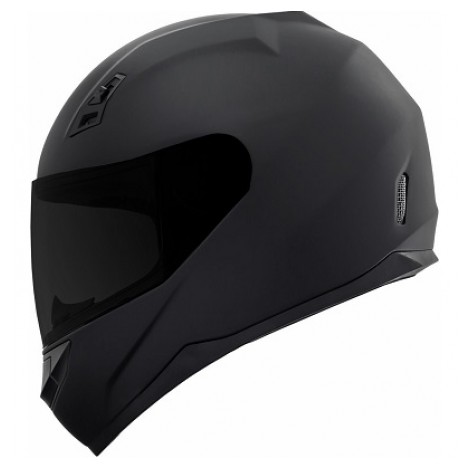
Right from the pages of the best sci-fi thriller, this lid is all black with excellent peripheral vision and air circulation. It comes stock with a clear and tinted visor which are both optically correct.
Ventilation and liner
With five vents located on the front, top and rear of the helmet, air flow is not a problem. Inside liner and cheek pads are made of hypoallergenic and antimicrobial fiber which are easily detached and washable.
Cost and Value
At right around $100 (GDM lists at $129 but has been reduced to $99), the helmet certainly makes a fashion statement with its sleek all black look but doesn’t break the bank. It compares quite favorably to other helmets in its category and price range such as the Bell Vortex. This helmet will definitely bring out the superhero (think Ant Man) in any rider.
Weighs in at approximately four pounds
Five different sizes to choose from
D-Ring chin strap
Shields are scratch proof and UV protected
Clear coat finish
Sizing may be a problem/consider buying one size larger
May not have room for eyeglasses
8. SiGi Zoom Open Face
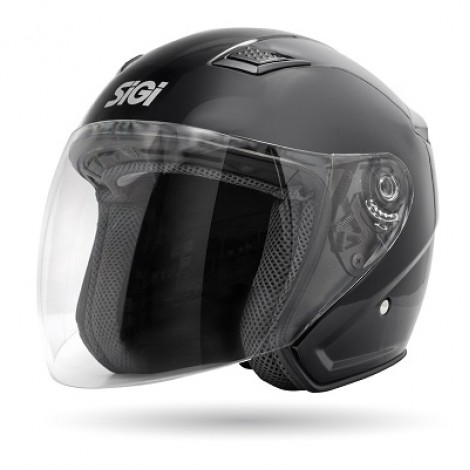
The helmet includes both a UV resistant polycarbonate visor and a thermoplastic sun visor/wind shield giving the rider options according to weather conditions. Like the Scorpion Exo, the Zoom also integrates the easy to use Eliptech system in attaching the interchangeable visors.
Ventilation and Lining
With four ventilation ports, two on top and two at the rear, it provides plenty of air flow for the hot head cyclist. It also boasts the removeable Comfort microfiber lining which is odor resistant and washable.
Cost and Value
For well under $100, this product provides great bang for the buck with its interchangeable shield system, open face design and outstanding ventilation. At less than three pounds, it is pleasantly lightweight for its price. While not in the same league as the more expensive 560, it is a reliable alternative for beginning riders or those on a budget.
Visor and sun shield provide excellent front and peripheral vision
Interchangeable SiGiFit Comfort liner pads allows a perfect fit on any head
Top vents easily opened or closed with gloved hand
Great price for number of features
DOT certified
Wind noise
No quick release chin strap
9. GLX Sniper M14 Half Helmet

With design assistance from aerospace engineers, it features a high impact absorbing EPS (expanded polystyrene) foam layer to protect the old dome. The EPS system enables the helmet to protect the rider from even the hardest of blows.
Retractable Clear Shield
With the built-in shield, riders have the option of lowering it to keep all those road nasties out of the face or to simply go without and don a pair of Ray Bans or aviator sunglasses.
Cost and Value
Reviewers rave over this helmet both for its look and its price. At between $100 and $300 depending on size, this is a premier addition to the half helmet market. While not as inexpensive as many half helmets, it comes with a higher Amazon customer rating than similar half helmets from Bell and Sena.
Moisture wicking liner is removable and machine washable
State of the art ventilation system in front and rear
DOT certified
Smoke shield can be purchased separately
Quick release strap retention system
Pricier than other half helmets
Can run small in the interior
10. Arai XD4 Full Face
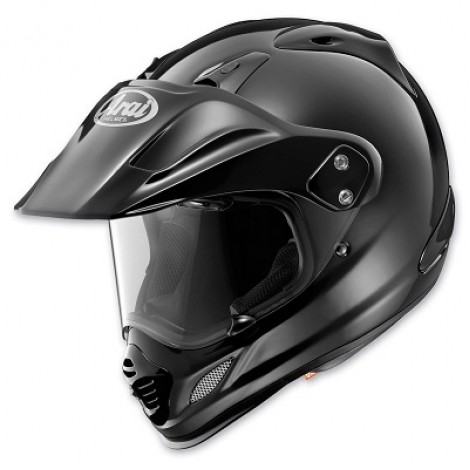
Totally redesigned, this model surpasses the ventilation system from the earlier XD3. In the front of the helmet, tit offers brow vents which shoot cool air to the forehead and chin vents which are easily manipulated with gloved hands.
Vector 2 Carbon Fiber Shell
The aerodynamic shell enables riders to achieve higher street speeds without worries. Snell M2015 certification protects from even the worst of crashes whether on the streets or off road in the severest of conditions.
Cost and Value
Arai makes some of the best motorcycle helmets in the world and thus come with an appropriate price tag. At about $500, the consumer is paying for a number of features not available on cheaper helmets such as Snell approval, Comfort headliner and FCS (Facial Contour Support) cheek pad design. Moreover, this well engineered helmet is peerless in its FFS (Free Flow System) surrounding the helmet’s shield which not only provides air flow but also sucks out warmer air from the interior.
One of the safest helmets on the market
Dry-cool technology keeps the rider comfortable under any condition
Detachable and washable headliner
Retractable visor provides sun protection without catching air
Intermediate to round shape fits most heads
Expensive & probably out the question for some riders
Headliner can be itchy
Criteria Used in Evaluation
The Different Types of Motorcycle Helmets in 2021
Open Face, Full Face or Modular
The first thing a motorcyclist will need to determine in choosing a helmet will be whether to purchase an open-face or full-face helmet. An open face lid will probably be more of a fashion choice rather than a safety option. Most open face types of helmets look cool, especially when combined with sunglasses or sun visor. Decorate your open face helmet with some killer graphics, and you will draw stares from even the busiest of bystanders. Full face types of helmets, on the other hand, provide added safety for speed seeking, adventure craving daredevils; or just for those who are ultra-cautious and demand the highest international safety standards. Modular types of helmets with flip-up visors give the rider the best aspects of both worlds.
Appearance
Whether you’re just tooling around the neighborhood, shredding an off-road trail or engaging in competitive racing at Laguna Seca, you’ll want to look good doing it. Today’s market features a myriad of different styles and looks from the ultra-modern types of helmets from Scorpion and Arai to old school products from Bell and Biltwell. If you want to look like you just emerged from the latest Star Wars movie, there are several modern and futuristic designs out there. Or, maybe you want to go the “chopped up” retro path with urban, camo or Italian racing graphics that could place you as an extra in an old Marlon Bando or James Dean movie instead.
Comfort
Today’s types of helmets have taken interior luxury to its ultimate destination with various liner systems boasting plush padding, washable and detachable components as well as odor-resistant fabrics. Modern types of helmets have also improved venting and air flow capabilities for the hottest heads. Most types of helmets will not only have front and chin vents but also top and rear adjustable openings which can easily be adjusted with gloved hands. Manufacturers have also created sizing charts to assist consumers in choosing the right helmet for their particular head shape and size.
Helmet Fit & Ride
If possible, choose a shop which will allow you to take a helmet out for a spin to see how it fits and whether it jostles, allows too much air flow or is simply too noisy. If you order online, then make sure to peruse the reviews and be leery of a helmet which has few or no reviews. Open face types of helmets will allow for more wind and air flow than fully enclosed options. If a helmet seems too loose or noisy, it’s certain that another model will fit more snugly and eliminate noise. When trying on full-face models, be aware of the ability for proper ventilation and manipulation of shields and visors.
Material
Most modern types of helmets utilize some form of composite or polycarbonate materials for the shell with the major crash absorbing material made of a foam polymer liner such as expanded polystyrene (EPS). Determine the quality of various components of the helmet and shy away from cheap plastic parts which may easily break or will provide dubious protection at best. After all, a helmet is designed to protect, and if it doesn’t do that, then it is worthless.
Safety
Any helmet which hasn’t at least earned DOT certification should be avoided like the plague with types of helmets exceeding FMVSS or ECE specifications highly preferable. A select number of types of helmets will also be Snell Foundation approved but will be on the pricier side of the spectrum. Moreover, a compromised helmet which has been dropped or involved in a crash needs to be replaced. Experts often say to change out helmets every few years regardless of the condition to maintain the highest safety levels.
Price
Motorcycle types of helmets can be purchased for as little as $50 at the local WalMart up to as much as $1,500 when considering a helmet such as the AGV Pista which as at the apex of the motorcycle racing world. Consumers need to determine a budget, frequency of use, and function when deciding on a helmet. For the novice or cost-conscious rider, there is the number of perfectly suitable types of helmets of all types in the $100 price range. For a rider who is upgrading or wants more bells and whistles, a quality helmet may approach the $400 or $500 mark.
Frequently Asked Questions
About Different Types of Motorcycle Helmets
Q: Do I have to wear a helmet?
A: If you live in Illinois, Iowa or New Hampshire helmets are optional accessories, but in the remainder of the United States you will risk running afoul of the law if you go without. In any case, most people with common sense will recommend a helmet even for the most intrepid of riders. Motorcycle accidents are quite a common place because of lack of visibility and the omnipresent cell phone factor, which often leads to distracted driving.
Q: I’m a beginning rider and don’t want to spend too much money, so what should I look for in an inexpensive helmet.
A: First, you might consider the manufacturer. Only buy from a reputable company which may also produce higher end types of helmets. It’s likely that manufacturers such as Bell and Scorpion will make low-cost helmets which have many of the same features as their higher end products.
Q: I’m getting my first bike, and I will be using it mostly around town with rare trips onto the highway, what type of helmet should I choose?
A: An open face or modular helmet may be enough for your purposes. If safety is the utmost consideration, then make sure your helmet has at least two certifications. Many types of helmets will exceed both DOT and FMVSS standards. Also, you have to consider the cool factor. If it’s important for you to look good, then you’ll have to consider the appearance of your new lid. Manufacturers offer a variety of modern and retro styles to choose from.
Q: If I plan on racing my motorcycle, what helmet should I choose?
A: A full face helmet will probably be the best option for racing although some modular models will also do the trick. Most racers opt for the maximum protection which a full-face helmet will provide. You’ll want a good quality shield to ward off all the debris which might be kicked up on off-road trails as well as highly maintained asphalt tracks. Depending on your budget, there are several outstanding types of helmets made just for racing and you can pay more than a thousand dollars for a professional racing helmet.
Q: What material should my helmet be made of?
A: Today, most motorcycle types of helmets are made of composite plastics with the outer shell usually composed of polycarbonate, fiberglass or Kevlar. Inner linings are now almost exclusively made of expanded polystyrene. In today’s market, the material may be less important than style and function.
Q: What helmet might be best for someone with an oversized head?
A: Most manufacturers and middlemen such as Amazon or RevZilla will provide excellent sizing guides as well as videos demonstrating how to measure your head to ensure the best fit. Some types of helmets may run either small or large, so make sure to try on a potential helmet or pay attention to customer reviews.
Decision Time
Whether you choose an open-face or full-face helmet, it is essential in a world where distractions such as cell phones sometimes hinder drivers for motorcyclists to protect their heads from unexpected dangers. The ten helmets reviewed above have all passed stringent safety tests and are either DOT, ECE, FMVSS or Snell certified for safety. These types of helmets range in price from just under $100 to over $500 and enable the consumer a choice of ten different manufacturers who have proven to be among the best helmet makers in the world.
Comfort will be a major factor for any helmet purchase and today’s helmets are almost universal in providing a plush and detachable liners with some products going above and beyond in making cheek pads which can be adjusted for size and fit. Not only will comfort be a consideration, but any rider will also want to consider the aerodynamics, noise factor, and the durability of any helmet. Never fear, however, if you shell out hard earned cash for a helmet which may not be quite right for your taste since experts recommend types of helmets be replaced every three to six years according to the option of upgrading to the next style, company or price range.
Sources
- ThoughtCo – An Illustrated Guide to Motorcycle Helmet Types
- Wise Geek – What Are the Different Types of Motorcycle Helmets?
- Wikipedia – Motorcycle helmet
- It Still Runs – What Are the Benefits of Wearing a Motorcycle Helmet

